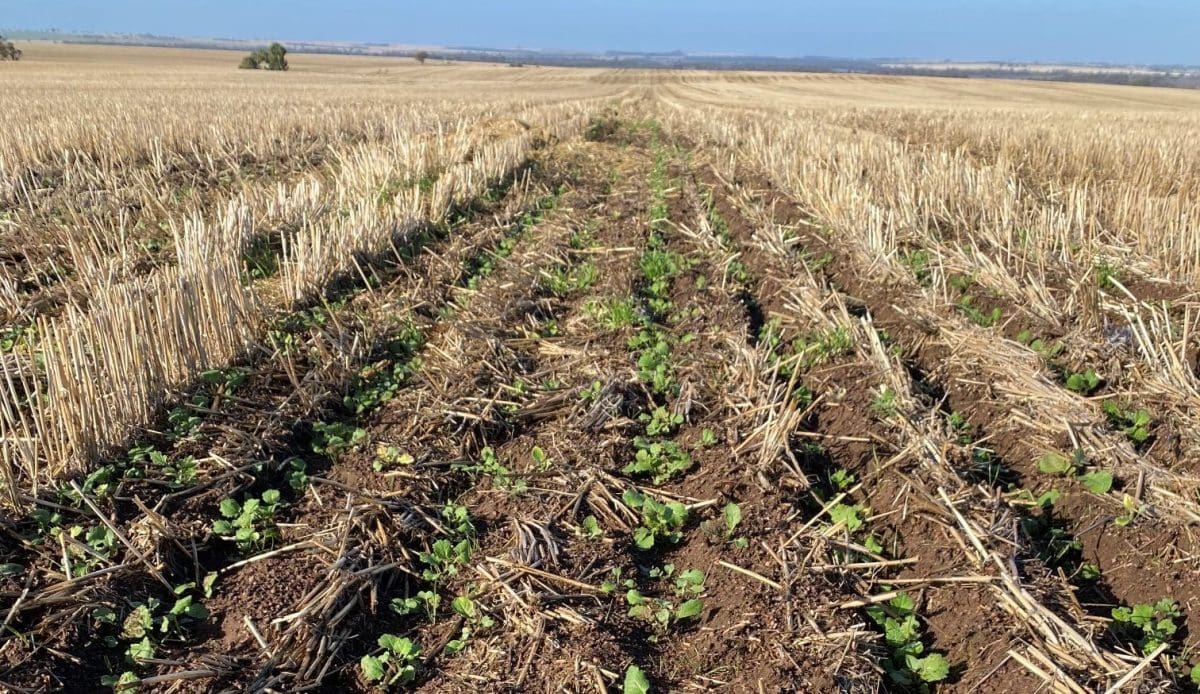
Canola seedlings at Quairading in WA. Photo: David Clegg, Seednet
AUSTRALIAN canola growers and farm advisors have today been notified that the European Union has announced it intends to reduce the maximum residue limit (MRL) for haloxyfop from 0.2mg/kg to 0.005mg/kg.
While no specific timeframe can be provided, the Australian industry expects this change to be announced in 2023.
Haloxyfop is very widely used by Australian growers as the most affordable post-emergent means of controlling grass weeds, including volunteer cereals, in canola.
It is a Group 1 herbicide, so part of the “Fop” and “Dim” family, and several alternatives registered for use in canola are already widely available.
Applying haloxyfop to canola according to current Australian label directions would create residues above the expected new EU MRL.
This means canola now being sown for the 2023-24 crop and treated with haloxyfop should not be delivered or received into the Australian grain-handling system for canola segregations destined for export.
Any loads of canola delivered in the 2023-24 season and beyond which exceed the MRL on haloxyfop will jeopardise market access to the EU for Australian canola.
“To maintain our strong trading reputation and ensure continued market access, it is critical that exported canola meets import country MRLs,” Australian Oilseeds Federation executive officer Nick Goddard said in a joint statement.
Behind Canada, Australia is the world’s biggest canola exporter, with the EU its biggest market by far.
Primary source: Australian Oilseeds Federation, Grains Australia, Grains Research and Development Corporation, Grain Trade Australia, the National Working Party on Grain Protection, Grain Producers Australia, and GrainGrowers Limited.



If Europe is reducing the maximum residue limit (MRL) for haloxyfop from 0.2mg/kg to 0.005mg/kg, Australia should follow suit. A lot of health risks for chemicals are discovered far too late. Please act swiftly!
The public needs action from the APVMA and FSANZ which are supposed to protect the public health and environments. A 40-fold reduction in the EU’s MRL for haloxyfop in imported canola seed should be a big wake-up call for the APVMA and FSANZ to urgently review the Australian MRL too. The herbicide is also approved in Australia for use in grain, legume and oilseed crops, lucerne, medic and clover pasture and seed crops, 20 orchard, vine and plantation crops including bananas, citrus, grapes, pineapples, pome and stone fruit, pyrethrum, tropical fruit and nuts, and in forestry. The public’s likely exposure to the chemical’s residues in the food supply is probably vast. Haloxyfop’s label notes it is toxic to fish and “Harmful if swallowed”, on page 10! https://apparentag.com.au/documents/brochures/031-App-Haloxyfop-520_5L-20L_Booklet_230129.pdf